Neuroplasticity- using physiotherapy to get Buddy’s brain and nerves working again.
Buddy is way cool, super cute, resilient, determined, loves a tasty treat and most importantly, has very dedicated owners! Whilst being cool and cute are optional extras, we really did rely heavily on the other aspects during his rehabilitation.
Buddy's owners contacted me shortly after Buddy had been referred to a veterinary neurologist because he had sudden onset of vestibular signs (head tilt) and tetraparesis (all 4 legs not able to work properly). After MRI scan, we knew that Buddy had injury to his brain which was causing his problems, most likely due to an infection, and his treatment would include both chemotherapy prescribed by his neurologist and a long period of rehabilitation.
When we first met Buddy, several days after the brain injury, his ability to do his normal activities was badly affected by tetraparesis- he was unable to sit up, stand or walk. He could not eat, drink, poo or pee without someone to help him. But I could clearly recognise his and his owner's spirit to work through this!
We started with some very basic goals: we needed Buddy to be able to move from lying down to sitting and then sitting to standing to enable him to access his food and water and interact with his family. A pretty difficult ask when his legs don't work well and his head thinks the horizon is at an angle of 45 degree to the left! Buddy’s right side was more badly affected than his left, and he quickly learn to find ways to use what he had.
The brain and nervous system is amazing because it has the ability to regenerate to some degree, we call it neuroplasticity. We used a variety of physiotherapy techniques and exercises and by focusing on normal joint range of motion and reinforcing normal movements along with neurological pathways and sequences, we were able to retrain Buddy to first sit, then stand, then walk with support.
After Buddy was able to stand again by himself, every week we continued to give him new tasks to perform to keep challenging him and help strengthen his muscles. We used treats and positive reinforcement to encourage him, while watching his weight. Whenever he wanted to move left, we asked him to move right. We used yoga mats to make the floor more grippy, FitPAWS peanut exercise balls and agility poles in various arrangements, stretchy theraband, obstacles, leg weights, dancing and even peanut butter licks to encourage more consistent use of his right side. To see some of Buddy’s cool rehab exercise and progression, watch the video of his journey.
And it’s an ongoing challenge. While Buddy is now back to performing all the fun things he could do before his brain injury, we are all continuing to work on developing his right front and back legs to match the left side in their strength and ability.
I love Buddy and I can see by his excitement when he comes to greet me at the door that he loves me too. But I also know that sometimes in the back of his mind, he is thinking of me as a physio-terrorist, not a physio-therapist…..…
This site is protected by reCAPTCHA and the Google Privacy Policy and Terms of Service apply.



